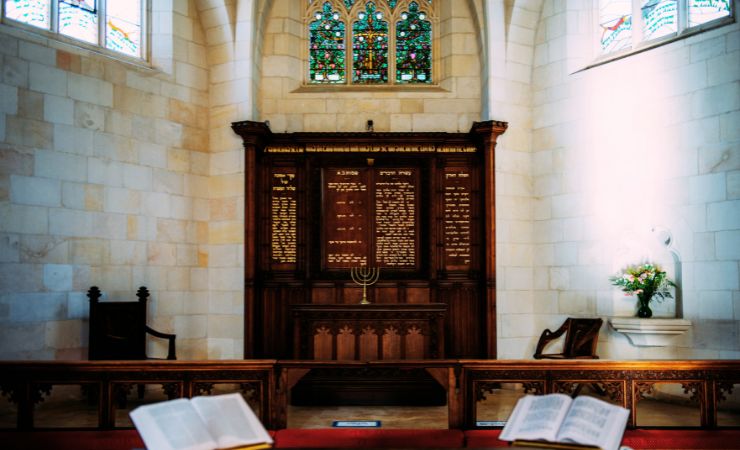Christ Church: The First Protestant Church in the Middle East
Christ Church, located within the Old City of Jerusalem, stands as a testament to the city’s rich religious diversity and the intertwining of faiths. Established in 1849, it is the oldest Protestant church in the Middle East and holds a unique place in Jerusalem’s religious landscape.

Location
The Chist Church is strategically situated in the Armenian Quarter very close to the Jaffa Gate. Its location within the city’s walls makes it easily accessible and a focal point for both locals and tourists alike.
Historical context
The Anglican church and the German Lutheran church, in a bid to strengthen their foothold, founded a joint Protestant diocese in Jerusalem in 1841. This diocese was instrumental in setting up many buildings and institutions in the city. The Immanuel Church, inaugurated in 1849, was a product of the London Society for promoting Christianity amongst the Jews. This Anglican organization believed in the profound significance of the Jews returning to their homeland, viewing it as a step in the redemption process.
During the 19th century, a period marked by British colonial and evangelical ambitions, the foundations of Christ Church were laid. As the Ottoman empire’s influence waned, the Church of England saw an opportunity and purchased land near Jerusalem’s Jaffa Gate in 1833. The establishment of Christ Church was not merely a religious endeavor; it was a strategic move, intertwined with the politics and aspirations of the time. The London Society for Promoting Christianity Amongst the Jews, driven by a profound belief in acknowledging Christianity’s ancient Jewish roots, took the helm in founding the church.
However, the journey to its establishment was not without challenges. The construction of Christ Church faced significant resistance, both from local factions and the Ottoman authorities. But with the unwavering support of influential figures like Lord Shaftesbury and the backing of a massive petition, the church’s construction moved forward.
On 21 January 1849, the church, originally named the “Apostolic Anglican Church,” was consecrated by Bishop Samuel Gobat and later renamed “Christ Church.” For half a century, it served as the seat of the Anglican Bishop in Jerusalem until the inauguration of St. George’s Cathedral in 1899.



The Church's Architecture
Christ Church was designed to resemble a synagogue. Its intention was clear: to bridge the religious divide and appeal to a broader audience, and to win converts.
The absence of crosses in its design is immediately noticeable. Instead, Jewish symbols, such as menorahs and stars of David, are prominently displayed, underscoring the church’s unique approach to religious representation. This design choice was not merely aesthetic but strategic, aiming to resonate with the local Jewish community.
Constructed by stone masons from Malta, the church adopts a Neo-Gothic style, a common architectural choice for Anglican churches of the period. However, Christ Church distinguishes itself by omitting overt Christian symbols on its facade, a departure from traditional Anglican designs.
The interior continues this theme of fusion. Oriented towards the Temple Mount, as is customary for synagogues in Jerusalem, the church aligns itself with Jewish traditions. The paneling behind the altar is evocative of the Torah ark found in synagogues, further emphasizing its dual religious influences. Yet, the Christian identity of the church is firmly established with the engravings of Jesus’ teachings and the Apostles’ Creed in Hebrew on the Eastern Wall.
Sources and Additional Reading:
Christ Church Jerusalem Wikipedia – Christ Church.
Nearby Sites
- Jaffa Gate: One of the main gates in the Old City of Jerusalem, Jaffa Gate is historically significant and a popular starting point for many tourists exploring the city.
- Tower of David: Located near the Jaffa Gate, the Tower of David is an ancient citadel with archaeological findings spanning over 2,000 years, now housing a museum detailing Jerusalem’s history.
- St. James Cathedral: Situated in the Armenian Quarter, St. James Cathedral is a 12th-century Armenian church known for its ornate interiors and as the burial place of two Christian saints, James the Greater and James the Just.
- Church of the Redeemer: Located in the Christian Quarter, the Church of the Redeemer is a Lutheran church with a tall bell tower offering panoramic views of the Old City.



